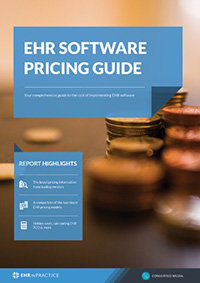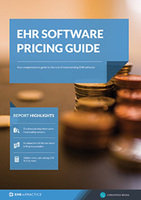How to calculate EHR software TCO
When evaluating an EHR system, consumers should look beyond the “out of the box” price and think in terms of long-term and comprehensive cost estimates. One of the most comprehensive and efficient measures for modeling long-term costs involves calculating the total cost of ownership (TCO). TCO is best defined as a full assessment of information technology and services costs over time. EHR TCO represents an accounting of all costs (both short term and long term, and direct and indirect) in order to create an accurate picture of the cost of operating an EHR and not merely purchasing the system.
When implementing an EHR system, the TCO should be an estimation of the "real" cost of ownership which often includes many overlooked expenses. Practices often make the mistake of focusing on “out of the box costs” such as purchase price, hardware and licensing, while minimizing or not fully considering some of the hidden costs of ownership.
Use this comprehensive EHR pricing guide to help you set a budget for new EHR software
When considering EHR TCO, an easy of way of accounting for costs is to divide them into direct and indirect costs. Directs costs include the costs easily attributed to the EHR system such as purchase price or maintenance agreements. On the other hand, indirect costs are those costs, which cannot be immediately attributed to the EHR system and often require analysis from multiple functions and departments.
Direct Costs
When calculating TCO, direct costs are relatively clear cut. Direct costs for an EHR system include the purchase price, additional software and hardware resources needed for the operation of the system, and the initial materials and labor required for system implementation. For example, the hardware includes new servers, desktop computers, tablets/laptops, printers, and scanners needed to operate the EHR system. Documentation of these costs can be as simple as recording the invoice within your project budget.
EHR consumers will often experience varying direct costs (and by association TCO) when comparing SaaS versus on-site pricing. The Healthit.gov website publishes a useful illustration of variance between on site and SaaS software. The Michigan Center for Effective IT Adoption has some useful data on direct upfront cost, yearly cost, and five-year total cost of ownership (TCO) for on-site and SaaS EHR deployment.
Indirect Costs
Indirect costs include staff time expended selecting the system and staff time diverted from regular duties during implementation. When looking at indirect costs during implementation one of the primary factors involved will be staff time needed to implement the system.
EHR TCO from this perspective should consider training and technical support needed to not only implement the system but to allow staff to learn the new system. Furthermore, lost productivity after implementation will need to be considered, particularly if the changes in the EHR system disrupt current practice workflow.
As you can see, documentation of indirect EHR costs can require ongoing analysis or a complex forecast. The complexity of this task can often lead to inaccurate or excluded costings if your EHR project plan doesn’t assign significant resources to these calculations.
In making long-term forecasts, EHR TCO provides the most useful measure of whether a system can be justified from an ROI perspective. Practices should also realize that these estimates should account for all costs even, those that cannot be easily modeled. Costs may be higher under a TCO, but they will provide a more accurate picture of EHR system costs.
Free white paper

EHR Pricing Guide
Get your complete guide to EHR software pricing and project costs. Your headstart on EHR pricing research

Featured white papers
Related articles
-

10 hidden costs of EHR software
Find out more about some of the hidden EHR costs that can render your budget and ROI forecasts nu...
-

Three ongoing EHR costs you forgot to add to your budget
Unforeseen ongoing costs are detrimental to EHR success. Here’s what you should factor in
-

Unexpected EHR costs you will face during implementation
Take action to avoid these hidden EHR implementation costs to avoid draining your budget



